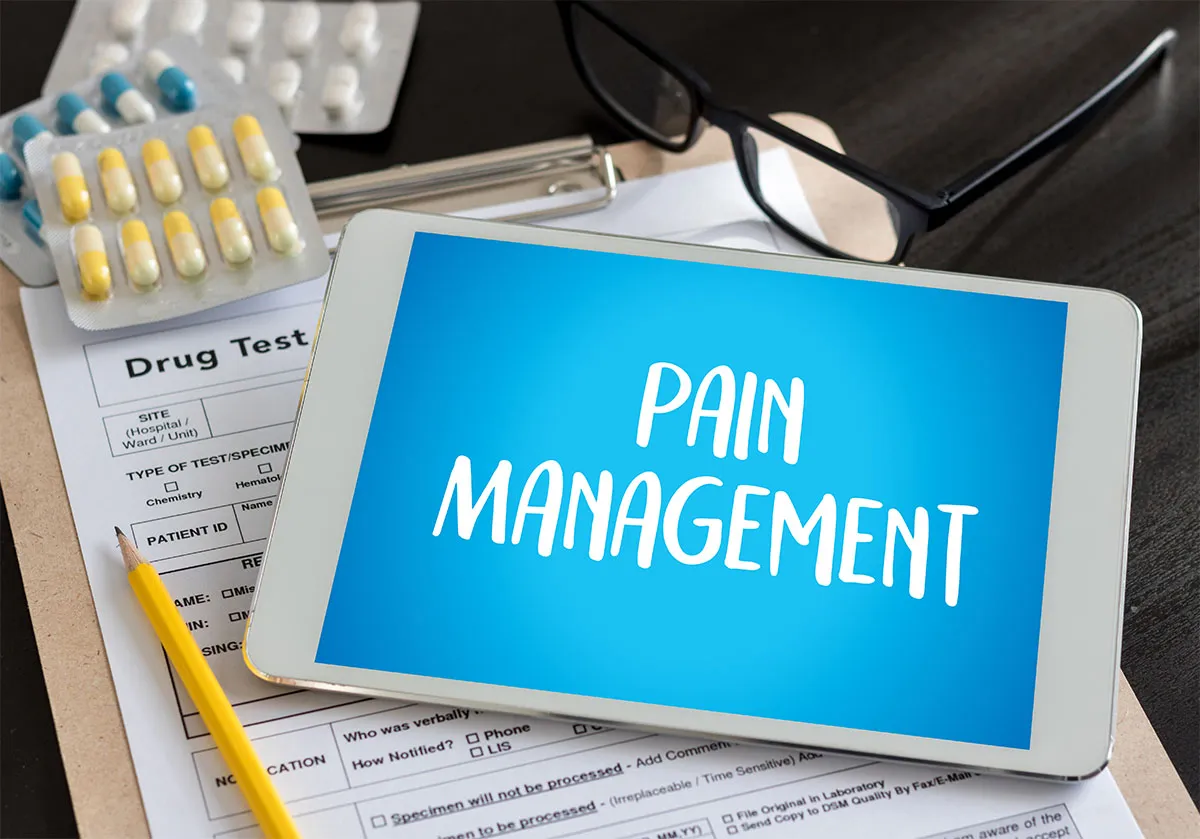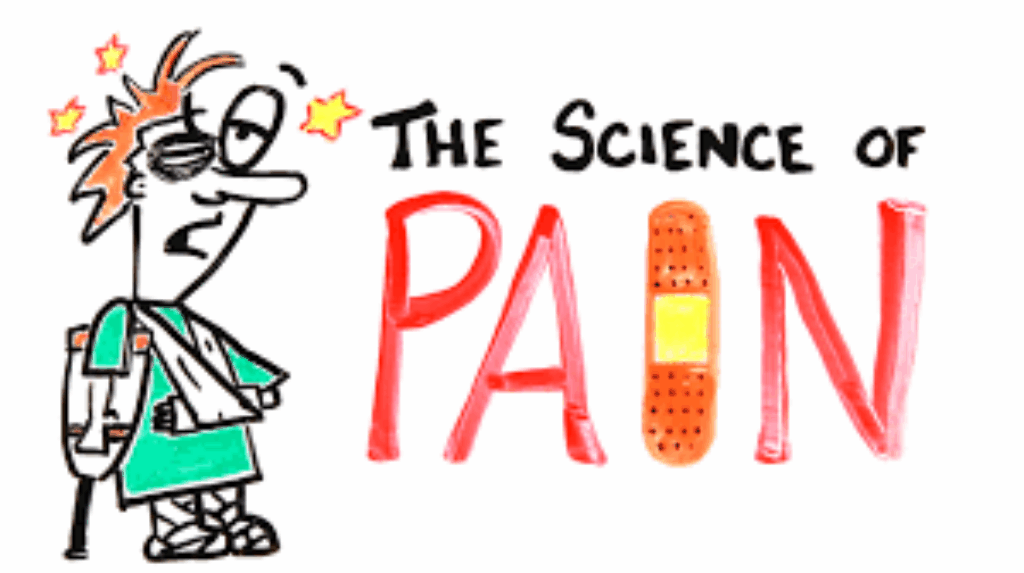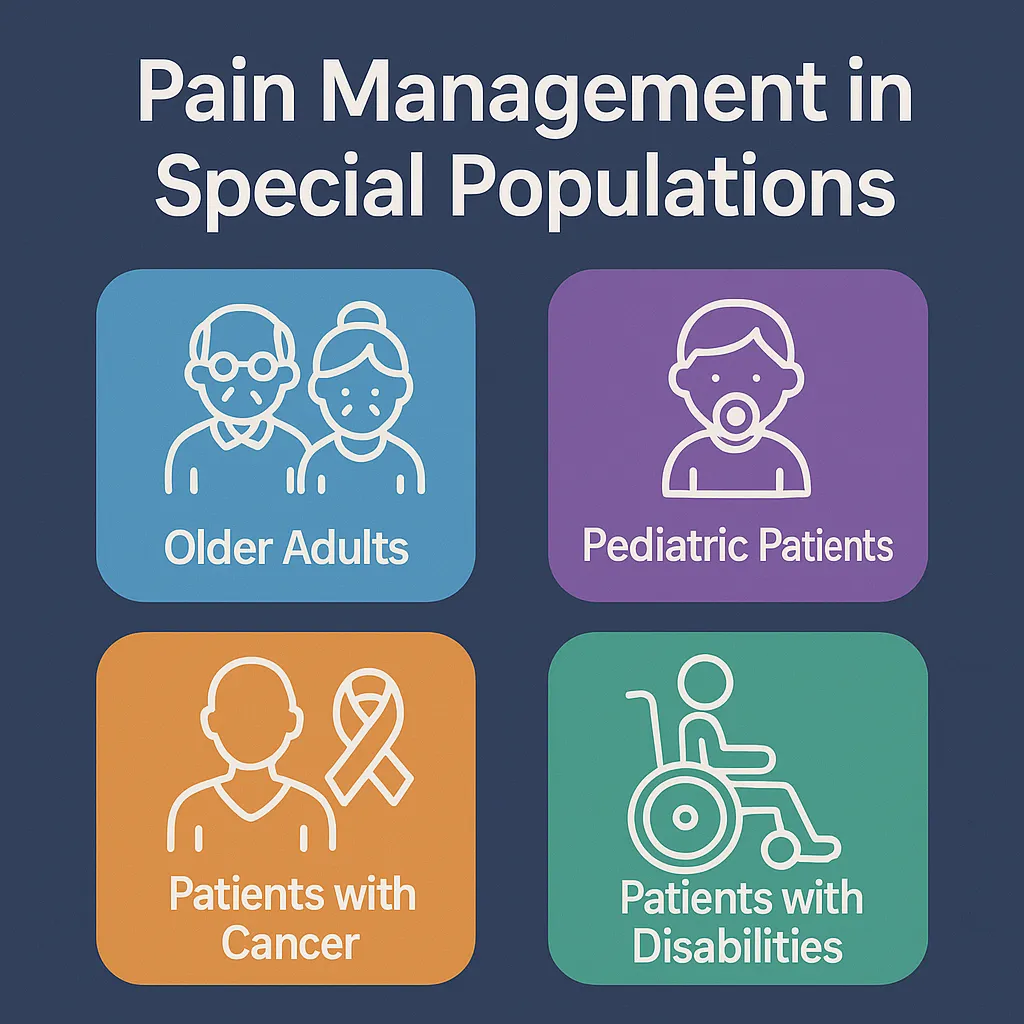
Executive Summary
Pain management is a multidisciplinary approach to preventing, reducing, or alleviating acute and chronic pain. It involves medical, physical, psychological, and complementary interventions designed to improve patients’ quality of life and restore functional abilities. Pain can arise from injury, surgery, chronic diseases, neurological disorders, or other medical conditions, and its effective management is critical for physical health, mental well-being, and overall life satisfaction.
This guide explores the fundamentals of pain management, including types and causes of pain, diagnostic methods, treatment modalities, benefits, challenges, and future trends, providing a comprehensive resource for patients, healthcare professionals, and caregivers.
Table of Content
Introduction
Pain is a universal human experience that can range from mild discomfort to severe, debilitating conditions. While short-term pain signals injury or illness, chronic pain can persist for months or years, profoundly impacting daily life, mobility, mental health, and social interactions.
Pain management is the field of medicine and therapy focused on understanding, assessing, and treating pain using individualized strategies. Rather than simply masking symptoms, modern pain management seeks to identify underlying causes, minimize suffering, and enable patients to regain function and independence.
Understanding Pain
Definition of Pain
The International Association for the Study of Pain (IASP) defines pain as “an unpleasant sensory and emotional experience associated with, or resembling that associated with, actual or potential tissue damage.” Pain is not solely a physical sensation—it also involves emotional, cognitive, and social dimensions.
Types of Pain
Pain is broadly categorized into:
- Acute Pain
- Short-term pain usually associated with injury, surgery, or illness.
- Serves as a protective mechanism to prevent further harm.
- Chronic Pain
- Persistent pain lasting longer than three to six months.
- Can result from conditions such as arthritis, fibromyalgia, or neuropathy.
- Neuropathic Pain
- Caused by nerve damage or dysfunction.
- Symptoms include burning, tingling, or shooting sensations.
- Nociceptive Pain
- Arises from tissue damage or inflammation.
- Often experienced as aching or throbbing.
- Psychogenic Pain
- Influenced by emotional or psychological factors such as stress or depression.
- Referred Pain
- Pain perceived at a location other than its source.
- Example: Shoulder pain from gallbladder inflammation.
Causes of Pain
Pain can stem from numerous conditions and events, including:
- Injuries – Sprains, fractures, burns, or surgical trauma.
- Musculoskeletal Disorders – Arthritis, back pain, osteoporosis, and fibromyalgia.
- Neurological Disorders – Multiple sclerosis, diabetic neuropathy, or nerve compression.
- Cancer – Tumor growth, treatment side effects, or nerve involvement.
- Post-Surgical Pain – Pain following surgical procedures or hospitalizations.
- Chronic Diseases – Diabetes, cardiovascular disease, or autoimmune conditions.
- Psychological Factors – Anxiety, depression, and stress can exacerbate pain perception.
The Science of Pain
Pain perception involves complex interactions between the nervous system, brain, and endocrine system:

- Signal Transmission – Nociceptors detect tissue damage and transmit signals via nerves to the spinal cord and brain.
- Processing in the Brain – The brain interprets signals, generating the sensation of pain and associated emotional responses.
- Neurochemical Mediators – Neurotransmitters, prostaglandins, and endorphins influence the intensity and duration of pain.
- Psychological Modulation – Attention, stress, and past experiences affect how pain is perceived and tolerated.
Understanding these mechanisms is crucial for developing effective pain management strategies tailored to each patient.
Pain Assessment
Accurate pain assessment is fundamental to effective management. Common assessment methods include:
- Patient Self-Reports – Numeric rating scales (0–10), verbal descriptors, and visual analog scales.
- Behavioral Observations – Facial expressions, posture, and movement patterns.
- Physiological Indicators – Heart rate, blood pressure, and muscle tension.
- Diagnostic Tests – Imaging, nerve conduction studies, and laboratory tests to identify underlying causes.
- Comprehensive Questionnaires – Multidimensional tools like the McGill Pain Questionnaire or Brief Pain Inventory.
A thorough assessment considers intensity, duration, frequency, location, triggers, and the impact on daily life.
Principles of Pain Management
Effective pain management is guided by several core principles:
- Patient-Centered Care – Individualized treatment plans considering the patient’s needs, preferences, and lifestyle.
- Multidisciplinary Approach – Collaboration among physicians, nurses, physiotherapists, psychologists, and other specialists.
- Combination of Therapies – Integrating pharmacological, non-pharmacological, and complementary therapies.
- Minimizing Risks – Balancing pain relief with potential side effects or addiction risks.
- Function Restoration – Prioritizing the improvement of mobility, daily activities, and quality of life.
- Education and Empowerment – Teaching patients self-management techniques and coping strategies.
Pain Management Modalities
Pain management incorporates a wide range of strategies, categorized as follows:
1. Pharmacological Interventions
- Non-Opioid Analgesics – Acetaminophen, NSAIDs for mild to moderate pain.
- Opioids – Morphine, oxycodone for severe or cancer-related pain; careful monitoring required.
- Adjuvant Medications – Antidepressants, anticonvulsants, and muscle relaxants for neuropathic pain.
- Topical Agents – Creams, gels, and patches applied to localized pain areas.
2. Interventional Procedures
- Injections – Corticosteroids or anesthetics to reduce inflammation and block pain.
- Nerve Blocks – Targeted injections to disrupt pain signals.
- Radiofrequency Ablation – Using heat to disable nerve fibers transmitting pain.
- Spinal Cord Stimulation – Implantable devices delivering electrical pulses to manage chronic pain.
3. Physical and Rehabilitation Therapies
- Physiotherapy – Exercise, stretching, and strength training to restore mobility and reduce pain.
- Occupational Therapy – Adapting daily activities and work routines to minimize discomfort.
- Massage Therapy – Muscle relaxation and improved blood circulation.
- Heat and Cold Therapy – Reducing inflammation or promoting tissue healing.
4. Psychological and Behavioral Therapies
- Cognitive Behavioral Therapy (CBT) – Changing negative thought patterns related to pain.
- Mindfulness and Meditation – Reducing stress and improving pain coping strategies.
- Biofeedback – Training the body to control physiological responses to pain.
- Support Groups – Sharing experiences and receiving emotional support from peers.
5. Complementary and Alternative Therapies
- Acupuncture – Stimulating specific points to reduce pain and promote healing.
- Chiropractic Care – Aligning the musculoskeletal system to relieve discomfort.
- Yoga and Tai Chi – Gentle movement and breathing techniques for pain reduction and flexibility.
- Herbal and Nutritional Supplements – Reducing inflammation or supporting joint and nerve health (under medical supervision).
Pain Management in Special Populations

1. Pediatric Pain Management
- Tailored approaches for infants and children, considering age-specific communication and coping strategies.
- Non-pharmacological interventions (distraction, play therapy) often combined with medications.
2. Geriatric Pain Management
- Older adults may have multiple chronic conditions and increased sensitivity to medications.
- Emphasis on functional mobility, fall prevention, and minimizing side effects.
3. Cancer Pain Management
- Often complex due to tumor growth, treatment side effects, and neuropathic pain.
- Requires a combination of opioids, adjuvant medications, and supportive therapies.
4. Post-Surgical Pain Management
- Pain control through multimodal approaches (medications, regional anesthesia, physical therapy).
- Goal is early mobilization and reduced hospital stay.
Benefits of Pain Management
Effective pain management provides numerous benefits:
- Improved Quality of Life – Reduced suffering and better ability to perform daily activities.
- Enhanced Physical Function – Increased mobility, strength, and endurance.
- Emotional Well-Being – Reduced anxiety, depression, and stress associated with chronic pain.
- Better Sleep Patterns – Alleviating pain improves rest and recovery.
- Reduced Healthcare Costs – Prevents complications, hospitalizations, and overuse of emergency services.
- Increased Independence – Patients regain the ability to perform self-care and maintain social engagement.
- Personalized Care – Individualized treatment plans lead to more effective pain relief.
Challenges in Pain Management
- Subjective Nature of Pain – Difficulty in accurately measuring and assessing pain intensity.
- Opioid Dependency Risk – Balancing pain relief with potential addiction.
- Chronic Pain Complexity – Requires multidisciplinary approaches and long-term management.
- Healthcare Access – Limited availability of specialized pain clinics in some regions.
- Patient Education – Misconceptions about pain and treatment adherence can hinder outcomes.
- Insurance and Cost Barriers – High costs of therapies and medications may limit access.
Future Trends in Pain Management
Pain management is evolving with advancements in medicine and technology:
- Personalized Medicine – Using genetic and molecular profiling to tailor pain therapies.
- Digital Health – Mobile apps, telemedicine, and remote monitoring for chronic pain management.
- Regenerative Medicine – Stem cell therapy and tissue engineering for joint and nerve pain.
- Neuromodulation Technologies – Advanced implantable devices for targeted pain relief.
- Integrative Approaches – Combining traditional, complementary, and modern interventions for holistic care.
- AI and Predictive Analytics – Using data to predict pain flare-ups and optimize treatment plans.
Steps to Implement Effective Pain Management
- Comprehensive Assessment – Evaluate the type, intensity, and underlying cause of pain.
- Set Individualized Goals – Define desired outcomes such as pain reduction, improved function, or emotional well-being.
- Develop Multimodal Plan – Combine pharmacological, physical, psychological, and complementary therapies.
- Monitor and Adjust – Regularly assess response to treatment and modify strategies as needed.
- Educate Patients and Caregivers – Promote understanding of pain, treatment options, and self-management techniques.
- Collaborate with Specialists – Engage physiotherapists, psychologists, nutritionists, and pain specialists.
- Evaluate Outcomes – Measure functional improvement, quality of life, and patient satisfaction.
Pain management is not just a medical process — it also involves strong leadership, coordination, and strategic management to improve patient outcomes and system performance.
To explore how healthcare and other industries structure effective management systems, read What Is Human Capital Management (HCM)? and What Is Workforce Management?
Many healthcare organizations implement structured planning and efficiency tools. Discover how they work in What Is Project Management? and What is program management?
For hospitals and wellness centers improving patient relationships, What Is Customer Relationship Management (CRM)? offers valuable insights into maintaining long-term care connections.
To learn how expert advisors help healthcare systems improve processes and decision-making, check out What Is Management Consulting?.
If you’re interested in how motivation, performance, and coordination influence success in other fields, What Is Sports Management? provides a parallel look at managing human performance and wellness at scale.
Finally, explore how organizations build high-performing teams that maintain quality care through What Is Talent Management?.
Conclusion
Pain management is a critical field in healthcare that addresses the physical, emotional, and social dimensions of pain. Through comprehensive assessment, individualized care plans, and a multidisciplinary approach, pain management aims to alleviate suffering, restore function, and enhance the quality of life. With advances in medical technology, psychological therapies, and holistic interventions, pain management continues to evolve, offering hope and relief to millions of people worldwide. Effective pain management is not merely symptom control—it is a path toward improved health, well-being, and empowerment for patients and caregivers alike.


